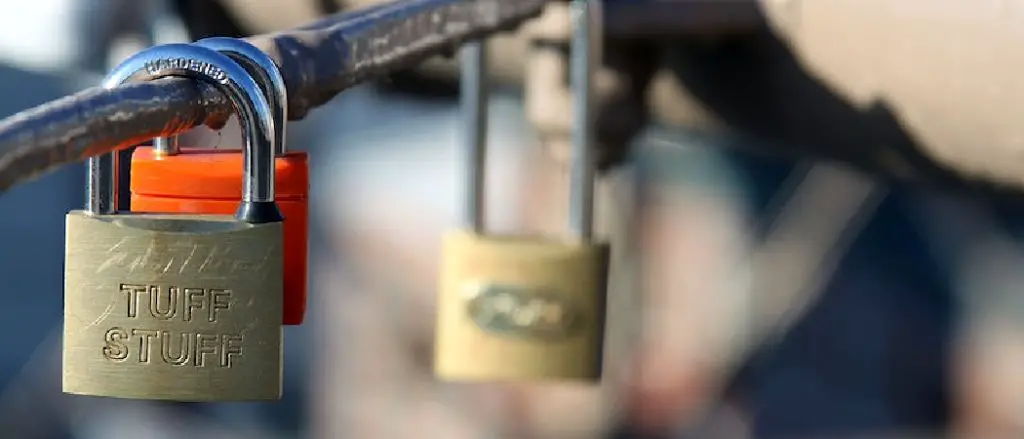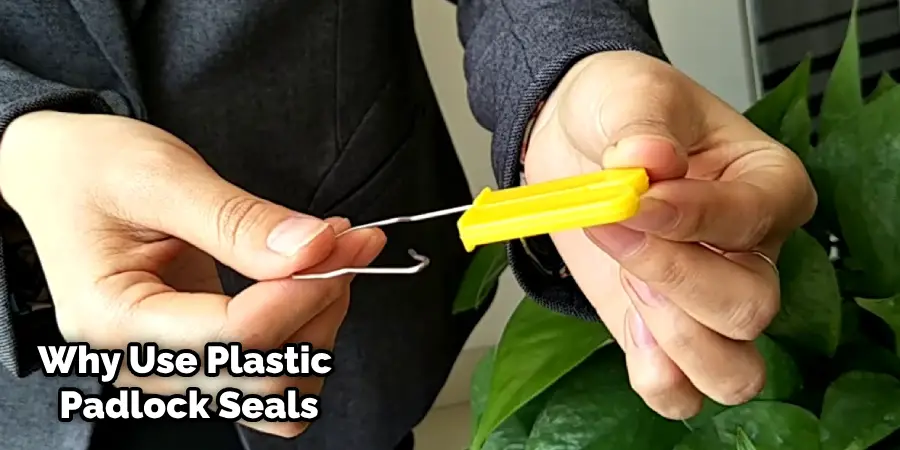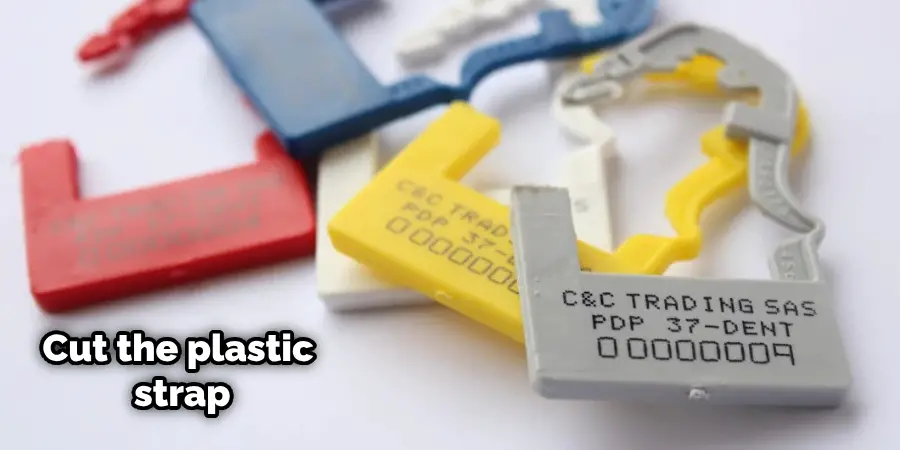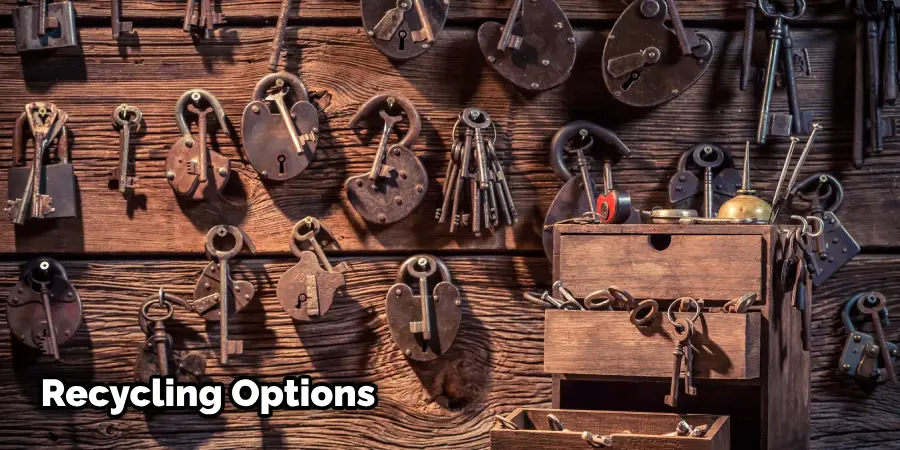Are you tired of struggling with those pesky plastic padlock seals? Have you ever found yourself frantically searching for scissors or a knife to open them, only to end up damaging the seal or even injuring yourself in the process?
Fret no more! In this empowering blog post, we will guide you through the step-by-step process of opening a plastic padlock seal with ease and confidence. Whether you are a frequent user of plastic padlock seals in your profession or want to learn how to open them for those occasional needs, we’ve got you covered.

Get ready to unlock the secrets that will save you time, frustration, and maybe even a few band-aids along the way! So, keep on reading this article about how to open plastic padlock seal.
Understanding Plastic Padlock Seals
Plastic padlock seals offer security solutions across various industries due to their tamper-evident features, varying levels of security, and cost-effectiveness.
Types of Plastic Padlock Seals
There are several common types of plastic padlock seals that cater to distinct needs. Pull-tight seals, for instance, are equipped with a one-way ratchet system. This allows the user to adjust the closure to the desired tightness, offering flexibility alongside security. Snap lock seals, on the other hand, utilize a notched locking pin mechanism that snaps into place and cannot be removed without leaving a visible sign of tampering. Numbered seals, meanwhile, provide an additional layer of security with a unique identifying number that can be recorded and tracked. The varying security levels and tamper-evident qualities of these seals make them suitable for differing requirements and contexts.
Materials and Construction
Plastic padlock seals are typically manufactured using materials like polypropylene, nylon, and polyethylene, each offering their own strengths and challenges. Polypropylene, for instance, is known for its toughness and fatigue resistance but can become brittle over time. Nylon seals are very durable and resist breaking, however, they can be affected by prolonged exposure to sunlight. Polyethylene seals are highly flexible and resistant to moisture but may be less durable. The lock’s security is further enhanced by inserts and locking mechanisms that serve to deter tampering and unauthorized access.
Applications and Regulations
Plastic padlock seals find application in diverse contexts, including utilities, transportation, and healthcare sectors. Their use in these industries is often governed by specific regulations and standards. In utilities, seals are used to secure meter boxes and valves, preventing unauthorized access. In transportation, they secure cargo containers and truck doors, safeguarding goods in transit. In healthcare settings, they are used on medical carts and containers to ensure the safety and integrity of medical supplies. These industries often have regulations in place to ensure the seals used meet certain standards of strength, durability, and tamper-evidence.
Types of Plastic Padlock Seals
Before we dive into the steps, let’s discuss the different types of plastic padlock seals available. There are two main categories: disposable and reusable. As the name suggests, disposable padlock seals can only be used once and must be cut off to be opened. Reusable padlock seals, on the other hand, can be unlatched and reused multiple times without any damage. It’s important to know which type you have before attempting to open it.
Why Use Plastic Padlock Seals?

Plastic padlock seals are commonly used in various industries, including transportation, logistics, and retail. They provide a secure way to seal packages, containers, and bags without the need for keys or tools. This makes them convenient and efficient for sealing and opening items quickly. They are also cost-effective, lightweight, and tamper-evident, making them a popular choice for companies looking to ensure the security of their goods.
Assessing Tampering and Security Risks
In the world of plastic padlock seals, maintaining security integrity is of paramount importance. The stakes are high, particularly when these seals are relied upon to secure valuable goods, confidential documents, or critical infrastructure. Being able to discern signs of tampering and understanding the associated security risks is key.
Identifying Signs of Tampering
One of the primary features of plastic padlock seals is the visible evidence they provide when tampered with. Physical signs such as cuts, tears, or broken locking mechanisms are immediate red flags. However, sophisticated tampering may not leave such obvious traces. Advanced methods of tamper detection can be employed in these cases. Forensic analysis, for instance, can reveal microscopic alterations or residues left behind during the tampering process. Some seals might also feature void markings, which appear when the seal is disturbed, providing a clear indication of tampering.
Security Risks and Ethical Considerations
Unauthorized tampering with seals carries serious consequences. It can lead to safety hazards if it allows unauthorized access to hazardous materials or critical infrastructure. It can also facilitate fraud, allowing thieves to access sealed goods undetected. From a legal perspective, tampering is often considered a criminal act, and perpetrators can face severe penalties. It’s crucial to emphasize that authorized personnel should only open seals and the process must be thoroughly documented to ensure accountability.
Alternative Options to Breaking Seals
While breaking a seal is often the quickest way to access its contents, it isn’t always the best or most ethical approach. Depending on the type of seal, authorized removal methods may exist that don’t involve breaking the seal. For instance, specialized tools are sometimes available that can open certain seals without compromising them. Alternatively, in some cases, it may be feasible to contact the authority who issued the seal for authorization or assistance in removing it. This can prevent unnecessary damage and maintain the integrity of the sealing process.
Step-by-Step Guide on How to Open a Plastic Padlock Seal
Now that you understand the basics of plastic padlock seals, let’s get into how to open one. Here are the steps you can follow to open a plastic padlock seal successfully:
Step 1: Identify the Type of Plastic Padlock Seal You Have
As mentioned earlier, it’s essential to know if you have a disposable or reusable padlock seal. This will determine the method used to open it.
Step 2: Gather the Required Tools
To successfully open a plastic padlock seal, you’ll need two tools – a cutter and pliers. These tools are readily available and can be found in most households or workplaces.
Step 3: Cut the Plastic Strap

Using the cutter, make a small cut on both sides of the plastic strap to release tension. Be careful not to cut too deep, as this may damage the item inside.
Step 4: Locate the Metal Locking Mechanism
Once the tension is released, locate the metal locking mechanism on the padlock seal. It should be a small metal piece or ball at the end of the plastic strap.
Step 5: Grip the Metal Piece with Pliers
Using pliers, grip onto the metal piece and pull it away from the plastic strap. This will release the lock and allow you to open the padlock seal.
Step 6: Remove the Plastic Strap
With the metal locking mechanism released, you can now remove the plastic strap from whatever item it is sealing.
Step 7: Reuse or Dispose of The Padlock Seal
If you have a reusable plastic padlock seal, make sure to keep it for future use. If not, properly dispose of the seal and its components to avoid any potential hazards.
Step 8: Check the Item Inside
Lastly, check the item inside to ensure that it is intact and has not been tampered with. If you notice any signs of tampering, contact the sender immediately.
So there you have it – a simple yet effective guide on how to open a plastic padlock seal. Remember always to use caution and the correct tools to avoid any damage.
Cautionary Tips When You Open a Plastic Padlock Seal
1. Avoid Using Excessive Force
Using too much force to open a plastic padlock seal can not only damage the item inside but also potentially harm yourself. Use caution and follow the steps carefully.
2. Wear Protective Gear
If you are dealing with industrial-sized padlock seals, it’s advised to wear protective gloves while opening them to prevent any injuries.
3. Store Reusable Padlock Seals Properly
If you have a reusable plastic padlock seal, make sure to store it appropriately to ensure its longevity and effectiveness.
Troubleshooting and Common Challenges
A. Addressing Potential Difficulties
1. Stuck or Jammed Mechanisms
At times, the metal locking mechanism may get jammed or stuck, making it difficult to open the plastic padlock seal. This usually happens due to rust or accumulated dirt. Always inspect the seal before attempting to open it.
2. Damaged Tools or Seals
Damaged tools can make the process challenging and can even result in injury. Ensure your cutter and pliers are in good condition before using them. On the other hand, a damaged seal can mean it’s been tampered with. Always check for signs of tampering before and after opening the seal.
B. Offering Solutions and Alternative Methods
1. Lubrication Techniques
If you encounter a stuck mechanism, consider using a lubricant such as WD-40. A small amount sprayed onto the mechanism might help to loosen it and make the process easier.
2. Seeking Professional Help if Needed
If the seal is still not opening, or if you suspect it has been tampered with, it’s best to seek professional help. Contact the sender or the company from which the item was purchased. They might have specific instructions or resources to address the issue.
Proper Disposal of Plastic Padlock Seals
Environmental Considerations:
As with any plastic item, it’s essential to dispose of plastic padlock seals correctly to reduce harm to the environment. Always check with your local waste management guidelines for proper disposal methods.
Recycling Options:

Even though most plastic padlock seals are not recyclable due to their mixed material composition, some companies offer recycling programs for these items. Check if your seal is eligible for recycling and dispose of it accordingly.
DIY Maintenance and Prevention
Maintaining your plastic padlock seals properly can prevent a lot of issues and increase their lifespan.
A. Maintenance Tips
1. Regular Inspections
Regular inspection of your plastic padlock seals is key. Check each piece for signs of wear, tampering, or damage. This includes checking the plastic strap, the locking mechanism, and any other parts. Regular inspections will allow you to identify and replace any faulty seals before they cause any problems.
2. Lubrication for Moving Parts
Just like any other mechanical item, the moving parts of padlock seals can benefit from regular lubrication. This can help prevent the metal locking mechanism from getting jammed or stuck. Be sure to use a high-quality lubricant and apply it sparingly.
B. Preventive Measures
To avoid accidental sealing or locking, consider these preventive measures:
1. Proper Handling and Storage Practices
Ensure that your padlock seals are stored in a clean, dry environment. This will prevent any rust or accumulation of dirt that could interfere with their function. Also, handle the seals gently to avoid accidental locking or damage.
2. Training Staff on Correct Usage
One of the most effective preventive measures is proper training. Ensure all staff who use the seals are trained in their correct usage, including how to lock and unlock them, how to apply and remove them, and how to identify signs of tampering. This can prevent mishaps and also increase the security of your goods.
Legal Considerations
1. Understanding Local Laws and Regulations
It’s essential to be aware of any laws or regulations regarding the use of padlock seals in your local area, mainly if they are being used for goods transportation. Some places may have specific guidelines on how to seal and secure items properly.
2. Liability Issues
In cases where padlock seals are used for transporting valuable or sensitive items, there may be liability concerns if the item is tampered with or damaged. It’s crucial to clearly communicate any terms and conditions of seal usage to avoid any legal issues.
Advancements in Plastic Padlock Seals Technology
As technology continues to evolve, the field of plastic padlock seals has also witnessed significant advancements, enhancing their security and durability features.
1. RFID Technology
The incorporation of Radio Frequency Identification (RFID) technology in padlock seals has revolutionized the security aspect. RFID-equipped seals can be scanned and their data recorded electronically, allowing real-time tracking and reducing the chances of tampering.
2. Enhanced Material Quality
The quality of materials used in the construction of plastic padlock seals has also seen improvements. The use of high-grade, UV-resistant plastics has enhanced the durability and longevity of these seals, making them capable of withstanding harsh weather and environmental conditions.
3. Tamper-Evident Features
The advent of tamper-evident seals has significantly bolstered the security of items. These seals show visible signs of tampering, alerting the user to any potential breach of security.
4. Improved Locking Mechanisms
Technological advancements have also led to the development of more secure and reliable locking mechanisms. Many contemporary padlock seals now feature laser-etched barcoding and unique serial numbers, making them almost impossible to replicate.
These innovations not only ensure the integrity of the sealed items but also simplify the sealing and inspection processes, making plastic padlock seals an indispensable tool in various industrial and commercial applications.
Conclusion
In conclusion, plastic padlock seals play a crucial role in securing items during transit and storage, offering a reliable deterrent against tampering. Their use extends across various industries thanks to their durability, ease of use, and the added security features they provide.
However, their effective use requires routine maintenance, proper disposal methods, and a clear understanding of local regulations. Impressively, the integration of technology, such as RFID and tamper-evident features, has significantly enhanced the security and efficiency of these seals.
As technology progresses, it’s exciting to imagine how future innovations will further refine and improve these essential tools. Thanks for reading this article about how to open a plastic padlock seal.

